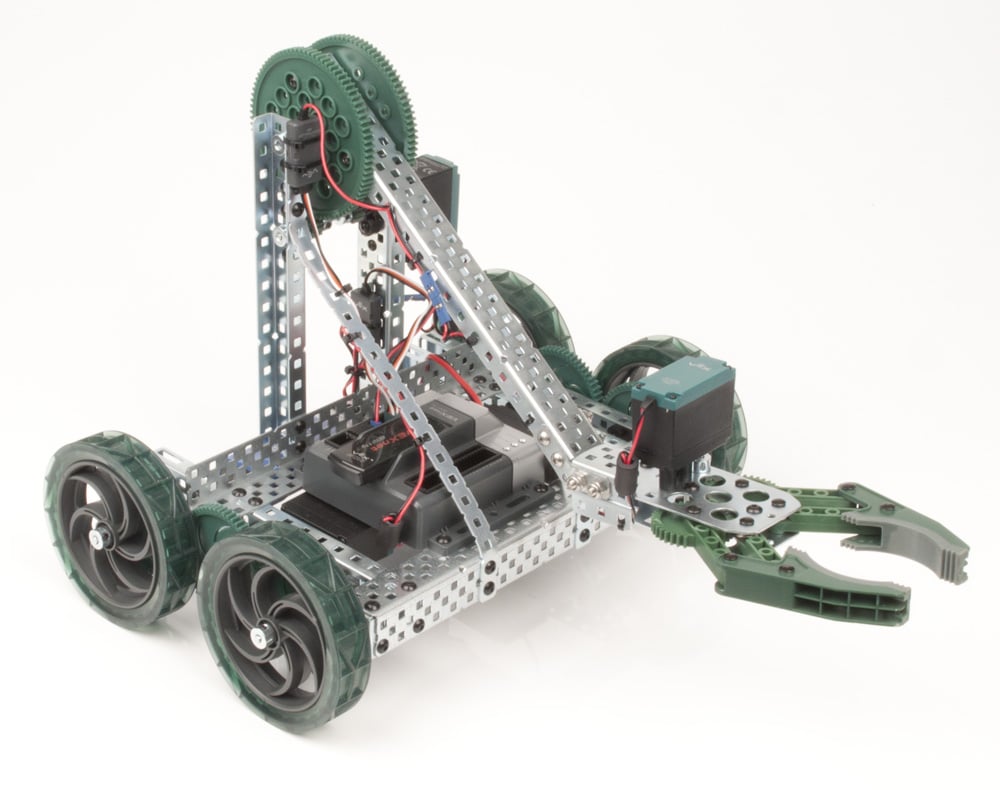RobotLAB Blog
Everything You Need To Know About Robotics in Businesses
Insider's summary of the hour of code initiative
This email sent by Gary Page from California Education Department is a great wrap up from the 'coding week' which was a huge success!

"
Teacher/Administrator:
Special thanks to all the teachers and administrators who took time to introduce students to coding during the recent Hour of Code week. The campaign brought attention to the need for all students to understand computational thinking and will help bring attention to education policy and decision makers on the need to make computer science “count” towards graduation.
In a single week, students at schools across the U.S. wrote 500,000,000 lines of code as part of Computer Science Education Week, organizers said.
- 0 Comments
- Jan 17, 2014 3:30:00 PM
- Posted by Charles Nimrad
- Topics: STEM, National News, Education, Computer Science, code, School, Student Engagement
Robotics competition draws students from all over Texas
It makes me proud as an expatriate Texan to find that the state of Texas is one of those states that realizes STEM learning is important and is doing something to ensure that its students meet the educational requirements of the new millennium in science, technology, engineering and math.
The Vex competition at Roosevelt high school in San Antonio is a good example.
One of the teams in the event sponsored by the U.S Army was a Vex team from an all-girls robotics club at the school.
So seriously does the state of Texas view these competition that recently the Texas Workforce Commission funded a startup grant to help 400 new Vex robotics teams in Texas.
Sounds like a lot of teams, does it?
Well countrywide 9000 Vex robotics teams are expected to compete in the USA this year.
Texas intends to have its share.
If you find yourself wondering what a Vex robotics team is, the VEX Robotics Design System is centered around the VEX Clawbot Kit.
The Clawbot is similar to the LEGO NXT in that assembly and disassembly is made simple with assorted pieces easily fitted together.
Some say that the Clawbot is cheaper.

- 0 Comments
- Jan 15, 2014 10:30:00 AM
- Posted by Charles Nimrad
- Topics: Robotics, Local News, STEM, Education, Computer Science, School, Student Engagement, Middle School
Furhat, the Sweden's advanced social robot
In 1950 mathematician Alan Turing introduced what is today called the Turing Test for Artificial Intelligence. According to his paper written at that time titled Computing Machinery and Intelligence, Turing believed that machines would evidence intelligence equal to humans when a human interacting with one could not tell the difference between the machine and another human.
Thus far, at least with humans of average intelligence, there is no danger that the automatons we find ourselves forced to communicate with on various “helplines” will be able to convince us of their humanity. But today’s robotics engineers have not quit trying to be the first to meet Turing’s Test.
Sweden’s Furhat robot is an example of a new approach to the test: not by merely attempting to convince its interrogator of its humanity by means of verbal dexterity, but rather by the added enhancement of displaying human facial expressions.

- 0 Comments
- Dec 18, 2013 3:16:00 PM
- Posted by Mike Nardine
- Topics: Robotics, Computer Science, International News
Hour of code initiative - are you in ?
Computer Science Education Week (CSEdWeek), designated in 2009 by the U.S. House of Representatives as the week of Grace Murray Hopper’s birthday, recognizes the transformative role of computing and the need to bolster computer science at all educational levels. This year, 2013, Dec. 9-15, CDEdWeek has added something new, a call to help introduce more than 10 million students across the length and breadth of the United States to computer programming, called HOUR OF CODE.
- 0 Comments
- Nov 7, 2013 4:39:00 PM
- Posted by Mike Nardine
- Topics: Computer Science, NAO, code
NAO Robot can now speak 19 languages thanks to Nuance
NAO Robot Delivers Truly Natural and Conversational Interactions with Nuance's Powerful Voice Recognition and Text-to-Speech, Driving the Future of Human-Robot Communication
We really love NAO, while working with it for 4 years, we've learned a lot about the robot, it's capabilities and especially how we, humans, interact with it. One thing is very clear: every person, either 3 or 90 years old, absolutely adore NAO. The most common response to seeing it "He is so cute!" followed by "Ohhh..." No one can ignore it, or be indifferent, the robot paved it's way to the hearts of everyone around it.
- 0 Comments
- Nov 4, 2013 11:30:00 AM
- Posted by Elad Inbar
- Topics: Computer Science, NAO
How do you get students from the worst school systems in the US to and through college
Now I know why LAS VEGAS says “What happens in Vegas, stays in Vegas.” The city isn’t really bragging, it is just embarrassed. There are probably a lot of reasons for that embarrassment, but here are the two I just discovered after watching this video:
First, they have some of the worst public schools in the entire country.
Second, some of those poor Las Vegas schools have no computers.
- 0 Comments
- Oct 25, 2013 2:13:00 PM
- Posted by Mike Nardine
- Topics: Local News, EdTech, Education, Computer Science
Relevant Posts
- Augmented Reality: A Tool for Teaching Students Robot Programming
- Fostering Innovation Through Youth Education in STEM and EdTech
- How Parents Can Foster STEM Learning Beyond the Classroom
- How Robotics Cultivates a Deep Understanding of Mathematics in Students
- RobotLAB Receives EDTech Chronicle 2023 ‘BESTIE’ Award for Landmark Partnership with American Samoa Dept. of Education.
Subscribe to Email Updates
-
I Want To Learn MoreADDITIONAL INFORMATION
